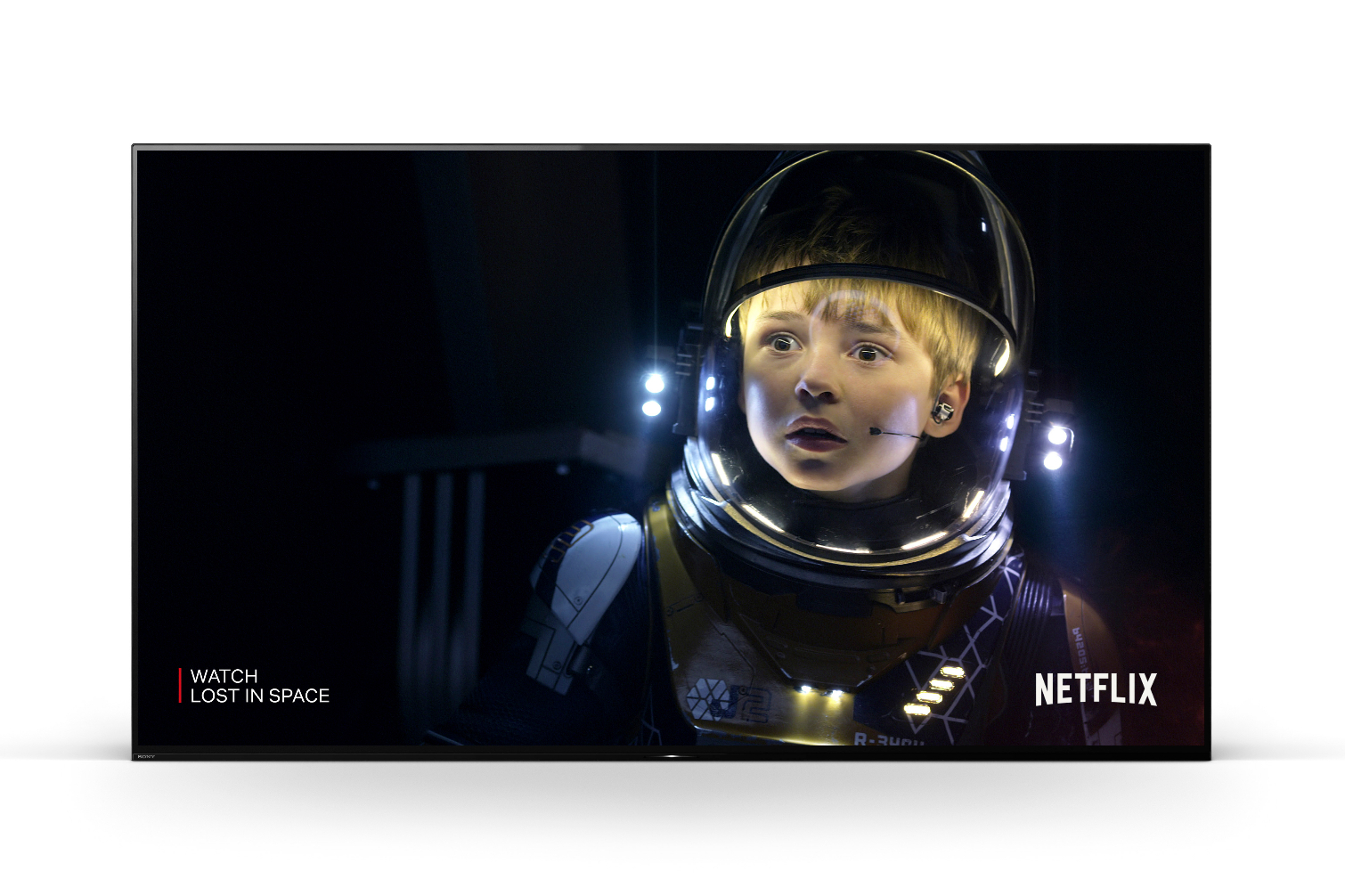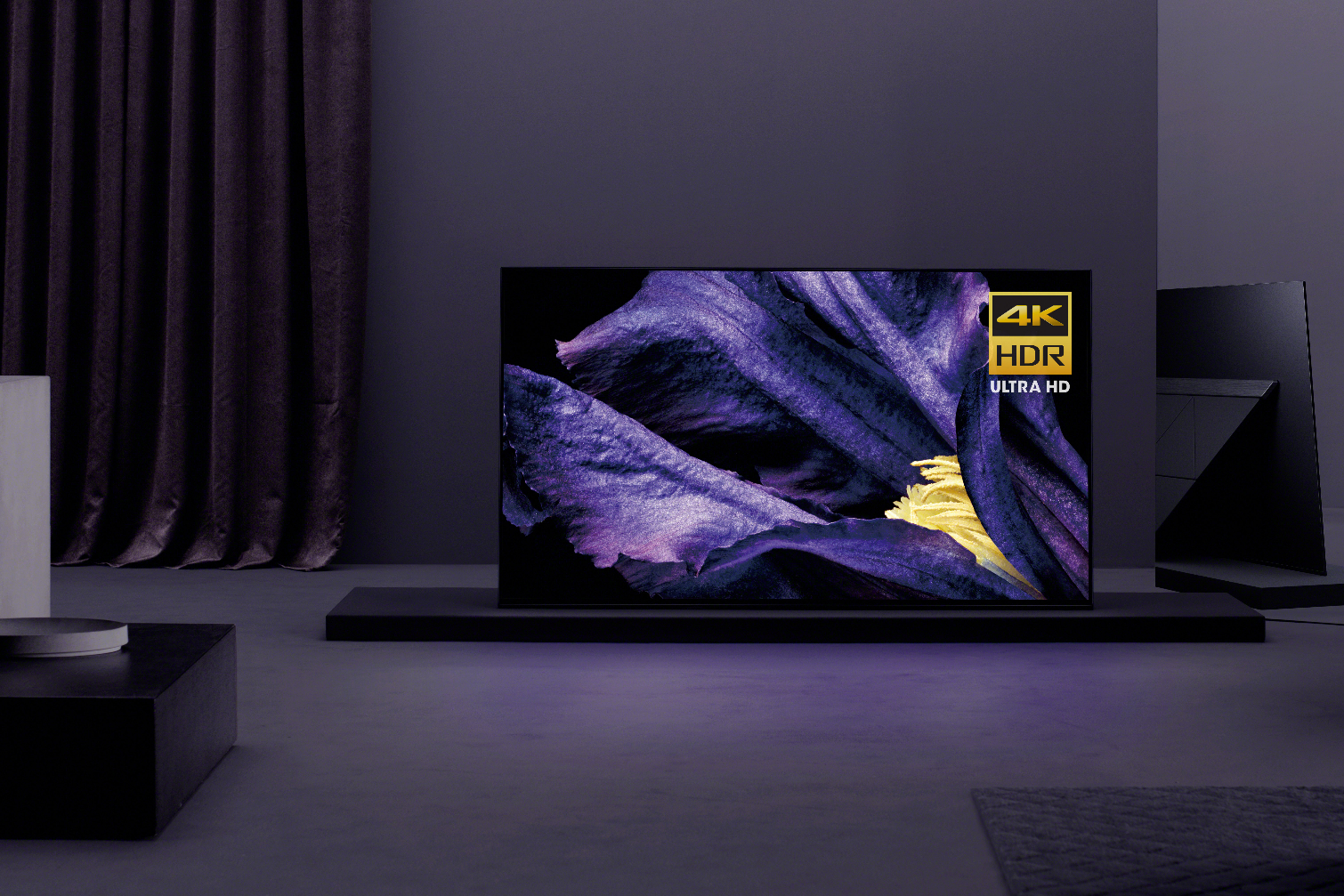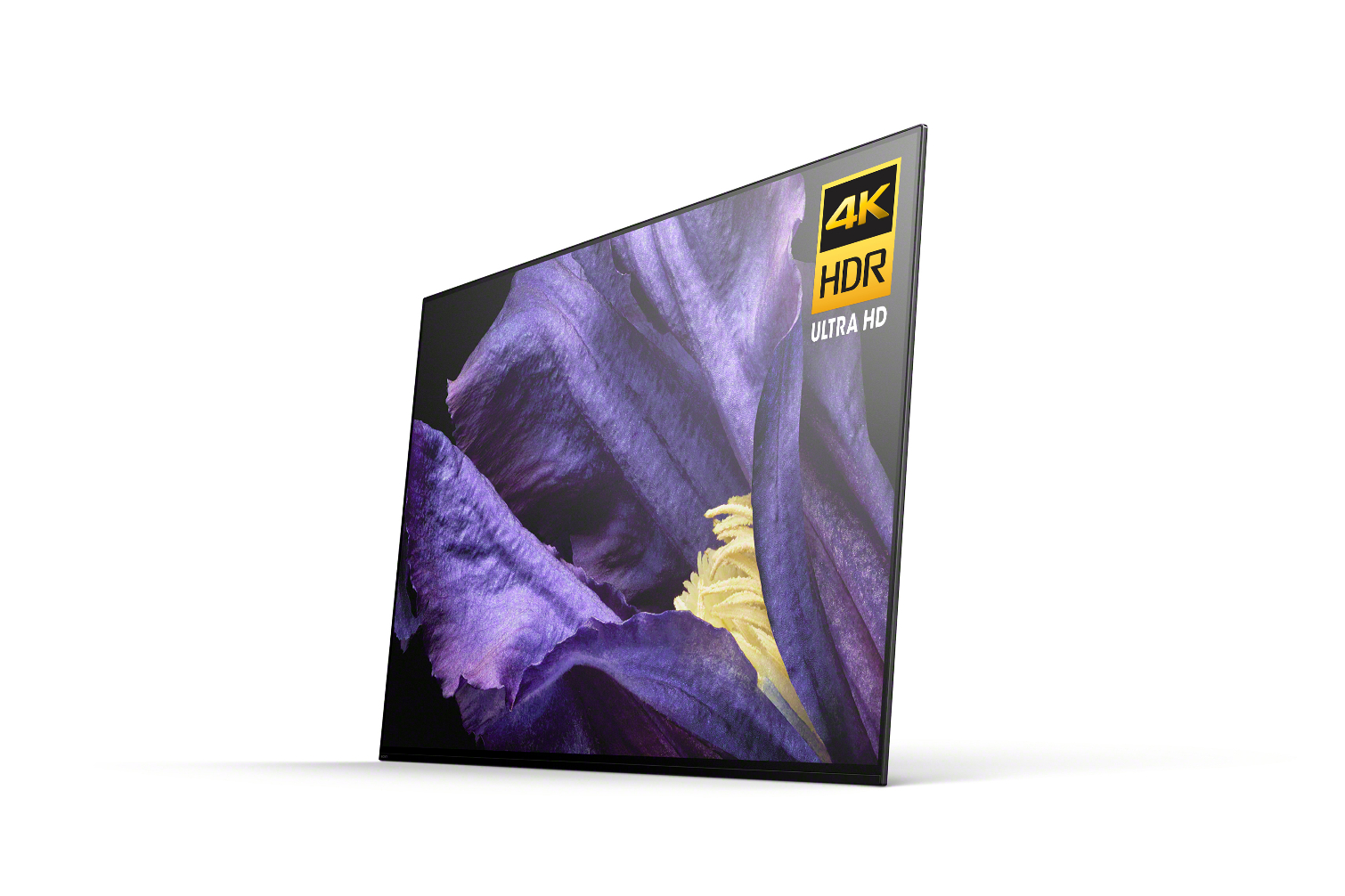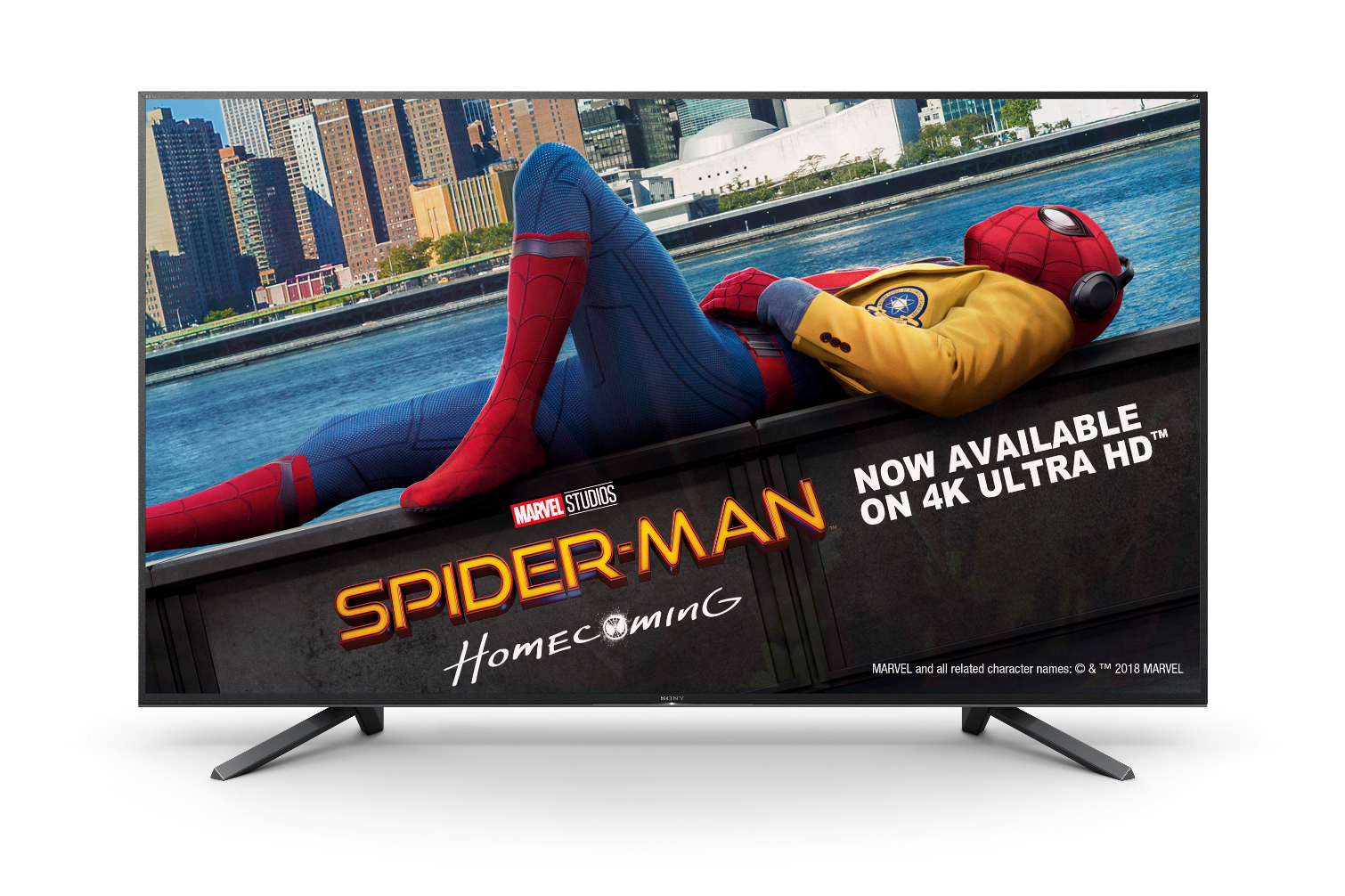Sony Master Series TVs Wow with Netflix Calibrated Mode
Sony's new Master Series OLED and LCD sets feature an exclusive Netflix Calibration Mode, which is designed to deliver superior Ultra HD 4K HDR streaming.
New York, NY -- At a global press conference and demonstration in New York City, Sony launched a line of new flagship displays it hopes will take the crown as the leading 4K TVs this year.
The announcement came along with news of a new proprietary feature from the leading streaming player, Netflix, that will only be available on Sony sets.

The new sets will appear under the Bravia Master Series moniker. The two new lines comprise the Sony A9F OLED TVs (in 55- and 65-inch sizes) and the Z9F LCD TVs (in 65- and 75-inch sizes). The TVs all feature the next-generation Sony Picture Processor X1 Ultimate, which is responsible for a lot of the heavy lifting in video processing, and the Netflix Calibration Mode, a special setting for matching streaming Ultra HD 4K HDR and other Netflix content to the TV's particular display characteristics.
The OLED and LCD models will also feature some of their own enhancements. The OLED A9F sets, for example, have a beefed up Acoustic Surface Audio+ sound system that turns the glass of the display into 3 separate speakers (left, right, and center). On the other side, the LCD Z9F gets better motion correction and improved viewing angles (called X-Wide Angle) so that everyone on the couch will see the same colors on screen.
Sony didn't provide prices or precise debut dates (the sets will be available "this fall"), but it did give reporters an up close, detailed look at various aspects of the new sets.
What Is Netflix Calibrated Mode?
Essentially, Netflix Calibrated Mode (NCM) is a special setting for decoding and displaying 4K content from Netflix on Sony Master Series TVs. It tries to recreate the picture the way it was originally mastered by the director in the studio.
Get instant access to breaking news, the hottest reviews, great deals and helpful tips.

The NCM setting is located in the built-in Netflix app on the Master Series sets. Once it's triggered, NCM can adjust the picture according to the specific abilities of the TV. The idea is to use all of the set's capabilities and yet also recognize the differences between, say, an OLED and LCD TV and so boost or reduce particular aspects of the picture to cater to that model's particular strengths.
MORE: 30 Best Netflix Movies to Stream Now
Netflix says the Netflix Calibrated Mode can be used for any content streaming from the service but where it really makes a difference is in Ultra HD material. The company says it has about 400 hours of HDR content already and about 2,000 hours of 4K programming. In demonstrations using scenes from Lost in Space, Rain, and Glow, the Netflix Calibrated Mode looked detailed, crisp, and alive.
Dark scenes from Stranger Things, for example, looked clearer and revealed details in shadows in the Upside Down that would be lost on other sets. The effectiveness of NCM, however, will ultimately depend on the speed of your broadband connection.
Sony and Netflix called Netflix Calibrated Mode "exclusive" to Sony. But Netflix repeatedly reminded reporters about how it rolled out other features across different devices and apps. So don't surprised if the company introduces similar picture enhancements in the future on other TVs that have sufficient video processing power. (Sony didn't rule out the possibility of NCM appearing in other Sony TVs in the future.)
How did they look?
Sony uses LG's OLED panels as the basis for its own OLED TVs. So Sony has been doing extensive work to prove it can do better with the same technology. The A9F is the culmination of those efforts, and Sony didn't shy away from showing off its new model next to an LG E8 OLED.

Watching a series of 4K HDR10 scenes, we compared the two sets in similar preset video modes (cinema mode with most of the enhancements turned off). For comparison, an RGB OLED Sony BVM-X300 monitor, employed by many directors to master movies, was used as a reference point.
The Sony A9F looked remarkably like the reference monitor in many scenes. It couldn't quite render some very muted details but in the same scenes the LG set completely blacked out the same picture elements. LG's E8 also had a tendency to drift more toward the blue end of the spectrum in shadowy scenes. On the other hand, the Sony A9F softened some of the bright pinpoint highlights, such as a bright area of a boy's T-shirt in It, compared to the original. So there are still tradeoffs to be made.
MORE: Best Smart TVs - The Best 4K and HD Televisions for the Money
Conversely, Sony's experience in video processing and color work is a conspicuous advantage. OLED can have difficulty rendering realistic reds, for example, so LG tends to push that end of the spectrum, overcompensating and making some elements look too ruddy or garish. Sony's A9F, on the other hand, managed to tune in the reds and pinks perfectly, making skin tones look more realistic.
Some of these differences are subtle and one almost needs to see the original RGB OLED mastering monitor to detect the differences. But for discerning movie fans, every extra hue and image detail is worth it. We'll see exactly how much it's worth when Sony announces prices closer to the launch time.
Serious Sound
If the picture doesn't sell you on the A9F OLED flagship model, Sony is hoping its unique sound system will. Building on the previous model's design, the set uses the front glass of the TV as a speaker. Actuators attached to the back of the glass vibrate the whole panel so that sound seems to emanate directly from an actor's mouth. (It's supplemented by two subwoofers in the back of the panel.)

For the A9F, Sony has boosted the decibel levels by boosting the power from 50 watts to 98 watts total. It's also added new transducers and a third acoustic section to the glass, creating two stereo and now one center channel speaker.
The beefed up system certainly sounded louder--easily filling a medium sized conference room with music--and with the center channel, dialogue stayed put in the center of the sound stage even when you moved around. So the effect created a more natural sound experience. Another major benefit: If you want to use your own home theater surround system, you still can--and use the Sony A9F's screen as the center channel. This proved to be a very effective setup, turning it very much into a movie theater-like experience.
MORE: Best Soundbars - Here Are the Best Sounding for the Money
Alas, the odd angled tabletop stand for the A9F is still in place. Although you can mount the set vertically on a wall, the tabletop stand cannot be adjusted. So if you do situate it on a surface the screen tilts back at a slight angle. This can be a godsend or a nightmare, depending on the lighting in your room. In rooms with large windows, sunlight will be ameliorated, but in places with ceiling lights the reflections will bounce annoyingly off the screen.
A Better LCD
On the LCD side of the Bravia Master Series--which uses a more conventional two-legged stand--the Z9F demonstrated some strengths of its own. Chief among those was the improved horizontal viewing angles. Inherent in LCD displays is a tendency to reduce brightness and washout or distort colors the more you move away from the dead center sweet spot viewing position.

Through a combination of backlighting and special lenses inside the set (the company wouldn't say more), Sony has eliminated much of the color distortion; it's even better than last year's top Sony models, which were already pretty good.
In the never ending quest to reduce blurring in fast action scenes or in content with fast moving objects, Sony is using its more powerful X1 processor and some tricky backlighting to sharpen the picture. LCD and so-called quantum dot TVs can only achieve a 120-Hz refresh rate, which can make rapid action look as if it's out of focus. So the Z9F uses frame interpolation (inserting black pictures) and a full-array LED backlight with active local dimming to brighten or darken specific parts of the screen.
MORE: Best Cheap 4K TVs (Under $500), Ranked from Best to Worst
Sony won't say how many zones (or independently operated sections) is in the backlight, but there are enough individual zones to allow it to focus on particular objects in a scene to improve detail and sharpness. (It also greatly helps in images that have both extreme light and dark elements.)
We didn't get to test the feature with our own favorite challenging scenes, but with 4K video of trains in Prague, terracotta tiled roofs, and other travelogues, the Z9F was definitely sharper than Sony's previous generation. While you couldn't point to particular artifacts or noise, the older Sony sets had a softness compared to the new X1 equipped LCDs.
The Z9F LCD set also demonstrated some of its superior video processing alongside a Samsung Q9F quantum dot set. The Sony Z9F, for example, was able to smooth out the color transitions in the setting sun sky of Revenant versus the Samsung model, which revealed some unintentional banding of colors above the horizon. The Sony LCD also looked more accurate in rendering some colors, particularly bright blues, when compared to the original mastering monitor.
Additional Features: Google Assistant, Same Lame Remote
Sony continues to use the Android TV interface for apps and searching for content. We still find the system flexible yet easy to navigate. Apps are updated regularly and all the popular streaming services are available. There's also Google Assistant, if you just want to talk to your TV. Unfortunately, Sony hasn't changed its remote controls--and that's definitely a bad thing. The confusing four-way directional pad surrounded by a circle of unrelated buttons will frustrate most users.
One thing that should please videophiles is a new built-in calibration feature from Calman. It means that people who want to adjust the Master Series sets to best suit the lighting characteristics of their particular room can now do so more easily. Usually it takes several hours to perform the appropriate tests, but Calman has worked with Sony to provide an easier calibration setup mode. You still need a pattern generator, connected laptop with the software, and a light meter, but Calman has cut the calibration time down from hours to minutes.
Sony's goal with the new Master Series TVs is to deliver a picture as close to and as faithful to what the director intended as possible. The company acknowledges the sets still aren't perfect, but as Kazuo Kii, a senior vice president at Sony said, they believe these TVs will be "the best of the best." Come this fall, we'll put that claim to the test in our labs.
Photo credits: Sony
John R. Quain has been reviewing and testing video and audio equipment for more than 20 years. For Tom's Guide, he has reviewed televisions, HDTV antennas, electric bikes, electric cars, as well as other outdoor equipment. He is currently a contributor to The New York Times and the CBS News television program.

